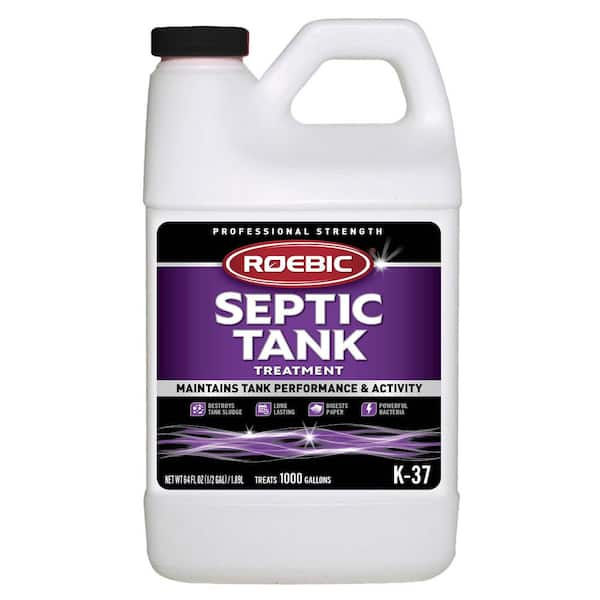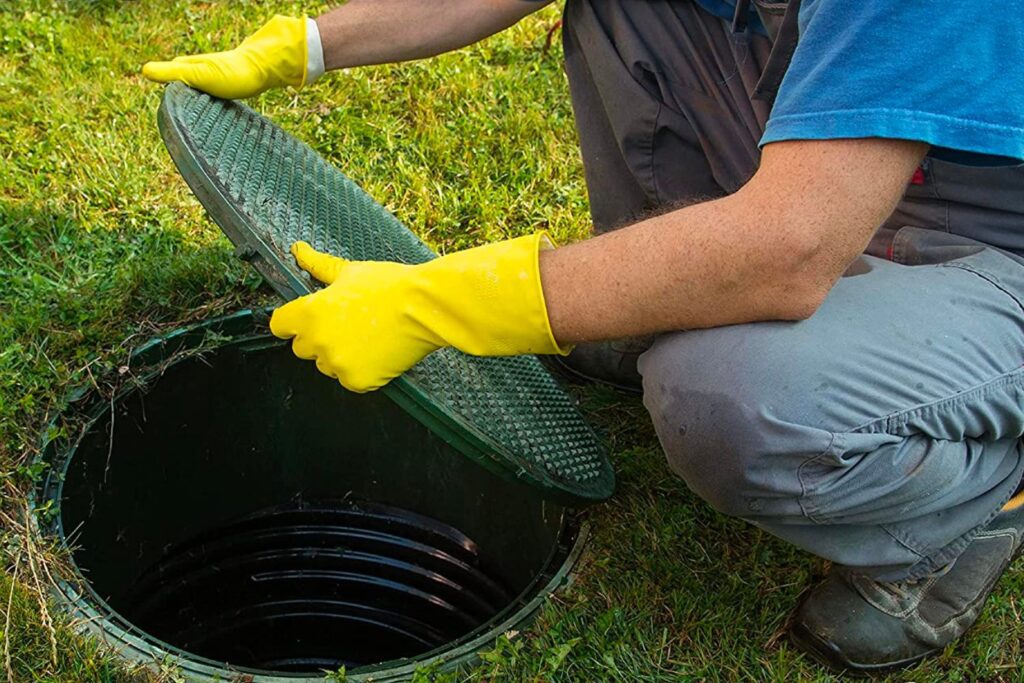Are you wondering how to keep your septic tank in top shape? Well, you’re in luck! In this article, we’re going to dive into the topic of septic tank treatment and share with you some of the best products available in 2020. By the end of this article, you’ll have all the information you need to make an informed decision on which septic tank treatment is right for you.
Septic tanks are an essential part of our homes, but they often go overlooked until a problem arises. That’s why it’s crucial to invest in the best septic tank treatment to maintain its efficiency and prevent costly repairs. Throughout this article, we’ll discuss the importance of regular septic tank maintenance and how a high-quality treatment can help prolong its lifespan. We’ll also review some of the top products on the market, exploring their features, benefits, and customer reviews. So, if you want to ensure your septic tank keeps running smoothly, keep reading!
Best Septic Tank Treatment 2020

Understanding Septic Tanks
Septic tanks play an essential role in managing household wastewater in areas without access to a centralized sewage system. If you have a septic system, it is crucial to understand how it works and the significance of septic tank treatment in maintaining its functionality.
What is a septic tank?
A septic tank is an underground container designed to collect and treat wastewater from your home. It consists of two chambers: the first chamber receives the wastewater from your house, while the second chamber allows for further treatment before the wastewater is released into the drain field or leach field.
How does a septic tank work?
When wastewater enters the septic tank, the solid materials settle at the bottom, forming a layer of sludge. Oil, grease, and lighter particles float to the top, creating a layer of scum. The liquid wastewater, also known as effluent, occupies the middle layer.
Naturally occurring bacteria in the septic tank partially decompose the solid waste, while heavy particles sink to the bottom. The effluent flows into the second chamber, allowing further decomposition of organic matter. Once the effluent reaches an appropriate level of treatment, it is distributed to the drain field, where it undergoes further purification through soil filtration.
Significance of septic tank treatment
Although septic tanks have a natural treatment process, it is crucial to provide additional support through septic tank treatments. Proper treatment helps improve the efficiency and longevity of your septic system, reducing the risk of backups, clogs, and unpleasant odors.
Factors to Consider in Choosing the Best Septic Tank Treatment
Choosing the best septic tank treatment for your specific needs is essential for maintaining a healthy septic system. Consider the following factors when making your decision:
Size of the septic tank
The size of your septic tank is an important consideration when selecting a treatment product. Larger tanks may require a more potent treatment to effectively break down waste materials. On the other hand, smaller tanks may require treatments specifically designed for their size to avoid overwhelming the system.
Type of waste
Different households generate varying types and amounts of waste. For example, households with a garbage disposal unit may produce a higher concentration of solid waste. Considering the type and volume of waste produced in your home will help you choose a septic tank treatment that can effectively break down the waste materials.
Environmentally friendly options
If you prioritize environmental sustainability, you may want to choose septic tank treatments that are eco-friendly. Look for products that are biodegradable, non-toxic, and do not harm the beneficial bacteria in the septic tank.
Types of Septic Tank Treatments
There are several types of septic tank treatments available in the market. Understanding the different options can help you make an informed choice.
Chemical treatments
Chemical treatments typically contain enzymes and bacteria strains that aid in the decomposition of waste. These treatments are often designed to break down solid waste and prevent the buildup of scum and sludge in the septic tank.
Natural treatments
Natural septic tank treatments utilize organic ingredients to promote the decomposition of waste. These treatments often contain beneficial bacteria and enzymes that break down organic matter, maintaining a healthy balance in the septic tank.
Bacterial additives
Bacterial additives are specifically designed to introduce or replenish beneficial bacteria in the septic tank. These additives help enhance the natural breakdown of waste and improve the overall performance of the septic system.
Benefits of Using Septic Tank Treatments
Using septic tank treatments regularly can provide several benefits, ensuring the efficient operation of your septic system.
Preventing backups and clogs
One of the most significant benefits of septic tank treatments is the prevention of backups and clogs. Regular treatments help break down solid waste and prevent the accumulation of scum and sludge, preventing blockages in your septic system.
Reducing unpleasant odors
A properly maintained septic system should not produce strong odors. Septic tank treatments help reduce unpleasant odors by promoting the breakdown of waste materials, eliminating odor-causing compounds in the process.
Extending the life of the septic system
By improving the efficiency of the septic system, regular treatments can help extend its lifespan. Properly treated septic tanks experience fewer issues and require less maintenance, saving you money in the long run.

Application and Usage of Septic Tank Treatments
To ensure the effectiveness of septic tank treatments, it is crucial to follow proper application and usage guidelines.
Proper dosage and frequency
Different treatments may have specific dosage requirements and recommended frequencies. It is essential to follow the instructions provided by the manufacturer to avoid over-treating or under-treating your septic system.
Application methods
Septic tank treatments can be applied through various methods, depending on the product. Some treatments may need to be added directly to the septic tank, while others can be applied through toilet flushing or drain pouring. Choose a product that aligns with your preferred application method.
Common mistakes to avoid
When using septic tank treatments, it is important to avoid common mistakes that could harm your septic system. Never use bleach, antibacterial soaps, or other harsh chemicals that may kill the beneficial bacteria in the tank. Additionally, do not overload your system by using excessive water or disposing of non-biodegradable waste.
Top 5 Septic Tank Treatments of 2020
When searching for the best septic tank treatment, consider these top-rated products:
Product A
Product A is a highly effective natural treatment that utilizes beneficial bacteria and enzymes to break down waste and reduce odors. It is environmentally friendly and suitable for various septic tank sizes.
Product B
Product B is a chemical treatment designed to dissolve and break down solid waste, preventing backups and clogs. It is compatible with all septic tanks and provides long-lasting results.
Product C
Product C is a bacterial additive specifically formulated to introduce healthy bacteria to the septic tank. It helps maintain a balanced microbial population and enhances the degradation of waste materials.
Product D
Product D is an eco-friendly septic tank treatment that combines natural ingredients to promote the breakdown of waste. It is safe for the environment and easy to use.
Product E
Product E is a powerful chemical treatment that effectively removes scum and sludge from the septic tank. It helps prevent backups and reduce unpleasant odors, ensuring the proper functioning of the septic system.

Comparing and Evaluating Septic Tank Treatment Products
When evaluating septic tank treatment products, consider the following factors:
Effectiveness
The effectiveness of a product is a critical factor in choosing the best septic tank treatment. Look for products with high ratings and positive customer reviews that indicate the product’s ability to deliver the desired results.
Cost-efficiency
Consider the cost-effectiveness of the treatment products, taking into account the required dosage and frequency of application. Balance the cost with the benefits and longevity the product provides to make an informed decision.
Safety and environmental impact
Ensure that the chosen septic tank treatment is safe for you, your family, and the environment. Look for products that are non-toxic, biodegradable, and do not harm the natural bacterial balance in the septic tank.
Customer Reviews and Recommendations
Customer reviews and recommendations can provide valuable insights into the effectiveness and performance of different septic tank treatment products.
User experiences and testimonials
Read user experiences and testimonials to understand how a particular product has worked for others. Look for reviews from users with similar septic systems and waste types to get a clearer picture of the product’s suitability for your needs.
Product ratings and rankings
Consider product ratings and rankings from trusted sources or consumer review websites. These ratings can help you gauge the overall satisfaction of customers and compare different products.
Expert recommendations
Consult septic system experts or professionals who can provide advice and recommendations based on their knowledge and experience. Their expertise can help you narrow down your options and choose the best septic tank treatment for your specific situation.

Tips for Maintaining a Healthy Septic System
In addition to using septic tank treatments, it is essential to follow these tips for maintaining a healthy septic system:
Regular pumping and inspection
Schedule regular pumping of your septic tank to remove accumulated solids. Inspect the tank for any signs of damage or leaks and address them promptly to avoid further complications.
Water conservation practices
Conserve water to prevent overloading your septic system. Use water-efficient appliances, fix any leaks, and avoid excessive water usage, especially during peak times.
Proper waste disposal
Dispose of waste properly to prevent the introduction of harmful substances into your septic system. Avoid flushing non-biodegradable items, chemicals, and excessive amounts of grease or oil.
Conclusion
Choosing the best septic tank treatment is crucial for maintaining a healthy and efficient septic system. Consider factors such as septic tank size, waste type, and environmental impact when making your decision. Regular use of septic tank treatments can prevent clogs, reduce odors, and extend the life of your septic system. Follow proper application methods and dosage guidelines, and avoid common mistakes that can harm your septic system. By investing in the right septic tank treatment and following proper maintenance practices, you can ensure the longevity and functionality of your septic system.
